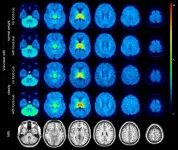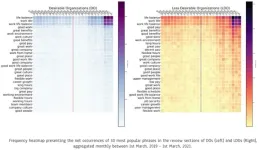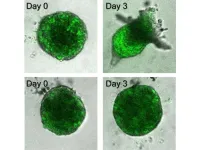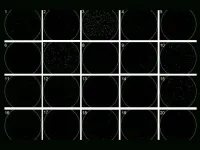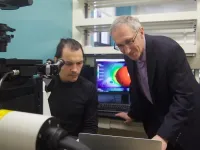(Press-News.org)
A new USC study that zeros in on the workings of individual T cells targeting the hepatitis C virus (HCV) has revealed insights that could assist in the development of an effective vaccine.
Every year, hepatitis and related illnesses kill more than one million people around the world. If unaddressed, those deaths are expected to rise—and even outnumber deaths caused collectively by HIV, tuberculosis and malaria by 2040.
For that reason, the World Health Organization and other leading groups have pledged to work toward eliminating viral hepatitis by 2030. While there are vaccines for two of the three most common forms of viral hepatitis – hepatitis A and hepatitis B – scientists have not been able to develop one for hepatitis C. Efforts to prime the immune system to fight the virus have been thwarted, partly due to limitations in the techniques available to study individual immune cells responsible for fighting HCV.
New research from the Keck School of Medicine of USC, funded by the National Institutes of Health and just published in the journal Frontiers in Virology, has now leveraged state-of-the-art technology to isolate and analyze individual HCV-specific immune cells for the first time. Past studies have only analyzed HCV-specific immune cells as a group.
The researchers studied CD8+ T cells, a type of immune cell whose function is to recognize and kill invaders, including viruses. CD8+ T cells find and bind to a specifically shaped piece of the virus known as an epitope, allowing them to replicate and generate an adaptive immune response to protect the body against future infections. Understanding this process at a granular level can help jumpstart research on a vaccine for HCV.
“For the first time, we were able to examine individual T cells binding to HCV epitopes, providing data that will be a valuable resource to other groups working to develop vaccines against HCV infection,” said Ana C. Maretti-Mira, PhD, an assistant professor of research medicine at the Keck School of Medicine of USC and the study’s first author. “Earlier studies were limited by the technology they used and weren’t able to tell us which epitopes to target.”
Isolating HCV epitopes
To learn more about the body’s immune response to HCV, Maretti-Mira and her colleagues analyzed cells from three groups: patients with a chronic HCV infection, patients who recovered from HCV after receiving antiviral treatment, and people who spontaneously recovered from HCV without treatment.
Past research has only studied HCV epitopes as a group, because it is difficult and expensive to isolate them. But Maretti-Mira’s team used barcoded dextramer technology, an advanced cell-labeling technique, to track two key HCV epitopes. They then used single-cell RNA sequencing to determine the gene expression of each cell in order to predict its behavior.
When a CD8+ T cell springs into action after finding an invader, it can harm or kill nearby healthy cells, too. (This is known as bystander cytotoxicity and explains why HCV can lead to liver damage.) The researchers found that antiviral treatment significantly reduced cytotoxicity in cells. They also found different mechanisms of repair in patients who received treatment versus those who spontaneously recovered, which could offer more than one pathway to developing an effective vaccine.
Broader immune system effects
In addition to studying HCV on its own, the researchers also looked at the immune response to HCV alongside two other viruses: cytomegalovirus (CMV) and influenza (flu). Previous studies suggested that people with an active HCV infection are more vulnerable to other viruses, but it was not known why.
They found that when patients with HCV had previously been infected with CMV or the flu, T cells for each virus became activated, increasing cytotoxicity, even when HCV was the only current infection.
“These cells are activated, but they cannot recognize the HCV virus,” Maretti-Mira said. “That may increase the chance for liver damage and could make it harder for the patient to fight other infections.”
Those broader insights about how the immune system functions when HCV is present could also help in the search for a vaccine.
Next, Maretti-Mira and her team will analyze pregnancies where the mother is affected by HCV. Unlike many other viruses, only about 5% of fetuses will contract HCV from an HCV-positive mother. Understanding why the transmission rate is relatively low could offer yet another clue about how to trigger immunity against HCV.
About this study
In addition to Maretti-Mira, the study's other authors are Matthew P. Salomon and Chikako Matsuba from the USC Research Center for Liver Diseases, Keck School of Medicine of USC; and Angela M. Hsu and Lucy Golden-Mason from the USC Research Center for Liver Diseases and the Division of Gastrointestinal and Liver Diseases, Department of Medicine, Keck School of Medicine of USC.
This work was supported by the National Institutes of Health [DK117004, DK106491] and the USC Research Center for Liver Disease [P30DK048522].
END
Collaborative work by teams at the Department of Medicine and Life Sciences (MELIS) at Pompeu Fabra University (UPF), University of California, Irvine (UCI), and the Institute for Research in Biomedicine (IRB Barcelona) has shown that interplay between circadian clocks in liver and skeletal muscle controls glucose metabolism. The findings reveal that local clock function in each tissue is not enough for whole-body glucose metabolism but also requires signals from feeding and fasting cycles to properly maintain glucose levels in the ...
Children with disabilities, and their families, may face discrimination in in the hospitals and clinics they visit for their health care, according to a new study led by researchers at University of Utah Health. These attitudes may lead to substandard medical treatment, which could contribute to poor health outcomes, say the study’s authors.
“They mistreated her and treated her like a robot. Every single time a nurse walked in the room, they treated her like she was not even there,” said one mother who was interviewed about her child’s health care encounters.
The findings, published in the journal Pediatrics, ...
Chicago, Illinois (Embargoed until 10:05 a.m. CDT, Tuesday, June 27, 2023)—Molecular imaging with 18F-flubatine PET/MRI has shown that neuroreceptors in the brains of individuals with obesity respond differently to food cues than those in normal-weight individuals, making the neuroreceptors a prime target for obesity treatments and therapy. This research, presented at the Society of Nuclear Medicine and Molecular Imaging 2023 Annual Meeting, contributes to the understanding of the fundamental mechanisms underlying obesity ...
The pandemic made remote work the norm for many, but that doesn’t mean it was always a positive experience. Remote work can have many advantages: increased flexibility, inclusivity for parents and people with disabilities, and work-life balance. But it can also cause issues with collaboration, communication, and the overall work environment.
New research from the Georgia Institute of Technology used data from the employee review website Glassdoor to determine what made remote work successful. Companies that catered to employees’ interests, ...
(Boston)— Intersex people’s (people whose sex characteristics do not fit within the strict binary categorizations of male or female) healthcare has received a lot of media attention recently, particularly with the uptick in anti-transgender legislation, which often also targets this community. Discrimination and mistreatment in social and medical settings, largely due to the stigma of not conforming to binary views of sex, results in many intersex individuals experiencing isolation, secrecy and shame, which can have a lasting impact on their mental health.
A new study from researchers at Boston University Chobanian & Avedisian School of Medicine highlights the need ...
UNIVERSITY PARK, Pa. — A cancerous tumor is the accumulation of cells uncontrollably dividing, some of which can invade other parts of the body. The process is difficult to predict in detail, and eradicating the cells poses even greater difficulty. Now, a Penn State-led research team has revealed how the exodus initiates, shedding light on a potential therapeutic target to halt the invasion and providing a prognostic marker to help clinicians select the best treatment option.
They published their findings on June 26 in the Proceedings of the National Academy of Sciences.
“Cancer cells don’t randomly detach from the primary tumor and disseminate ...
HOUSTON – (June 27, 2023) – Many of the drugs we use to treat cancer and infectious disease are ⎯ or derive from ⎯ natural products, but it’s difficult to know exactly how nature assembles them.
Retracing nature’s steps, Rice University chemical engineer Xue Gao and her team mapped out the full series of enzyme-powered reactions a marine fungus uses to produce 21R-citrinadin A, a complex molecule with anticancer properties.
In the process, Gao and her collaborators identified a new enzyme, CtdY, which is the only one ...
UNIVERSITY PARK, Pa. — A milliliter of blood contains about 15 individual drops. For a person with human immunodeficiency virus (HIV), each drop of blood could contain anywhere from fewer than 20 copies of the virus to more than 500,000 copies. Called the viral load, this is what is measured to allow clinicians to understand how patients are responding to anti-viral medications and monitor potential progression.
The time-consuming viral load testing needs to be repeated several times as a patient undergoes treatment. Now, a Penn State research team has developed a time and cost-efficient digital assay that can directly measure the presence of HIV in ...
Having a seat at the table, and voices heard, makes a world of difference when it comes to natural resources. It sounds intuitive, but experts didn’t have enough data to prove it until now.
A team of researchers from across the country pored over 108 groundwater management plans in California to see how well they protect stakeholders like domestic well users, farmers and ecosystems. They found that the plans that incorporated stakeholder input offered greater protection from groundwater depletion. Unfortunately, only 9% of the sustainability plans integrated these users in a comprehensive manner.
The findings have broad implications for resource management, both in California and ...
UNIVERSITY PARK, Pa. — Acoustic waves may be able to control how particles sort themselves. While researchers have been able to separate particles based on their shape — for example, bacteria from other cells — for years, the ability to control their movement has remained a largely unsolved problem, until now. Using ultrasound technology and a nozzle, Penn State researchers have separated, controlled and ejected different particles based on their shape and various properties.
They ...
